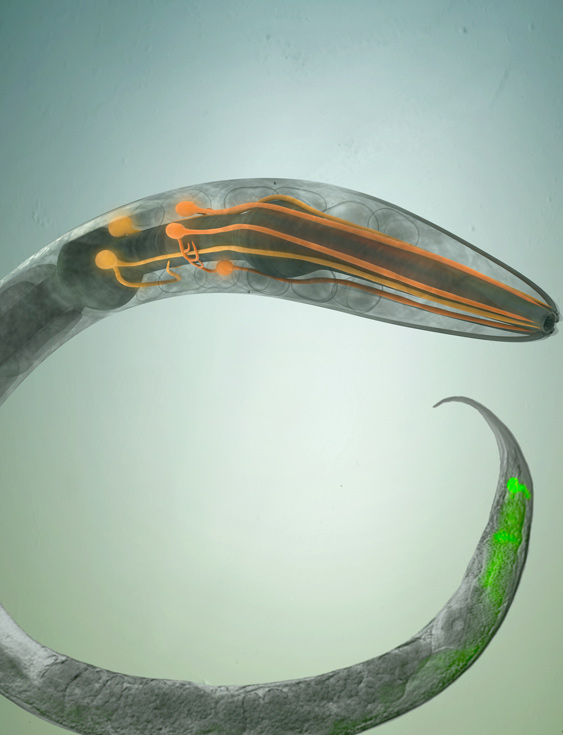About us
Alejandro Aballay's lab has a broad research program encompassing genetics, functional genomics and neurobiological approaches to study mechanisms involved in the control of immune responses against microbial pathogens. Immune activation needs to be fine-tuned since deficient or excessive inflammation can lead to cancer or other conditions such as Crohn’s disease, rheumatoid arthritis, atherosclerosis, diabetes and Alzheimer’s disease.
Recent studies from Aballay Lab indicate that different immune and cellular homeostatic mechanisms are regulated at the organismal level by the nervous system. The lab's research has demonstrated that specific neurons suppress innate immunity in the intestinal cells of the nematode Caenorhabditis elegans, in part by down-modulating a mitogen-activated protein kinase signaling pathway similar to the mammalian p38 MAPK pathway that is highly conserved across metazoans. The lab found that G-protein coupled receptors (GPCRs) participate in neural circuits that control a conserved p38/PMK-1 MAPK immune pathway and non-canonical and canonical XBP-1 unfolded protein response pathways that are expressed in non-neuronal tissues and that are necessary to alleviate the increased demand on protein folding during immune activation.
Alejandro Aballay's lab studies the following:
- Neuronal circuits involved in the control of immune homeostasis.
- Receptors involved in pathogen recognition.
- Signaling molecules involved in the control of immune homeostasis.
- Neural responses to infections such as pathogen-induced neurodegeneration.
- Molecular pathways involved in the control of recovery from bacterial infections.

Aballay Lab is growing
Aballay Lab is recruiting. Please see our Contact Us page to request details.
